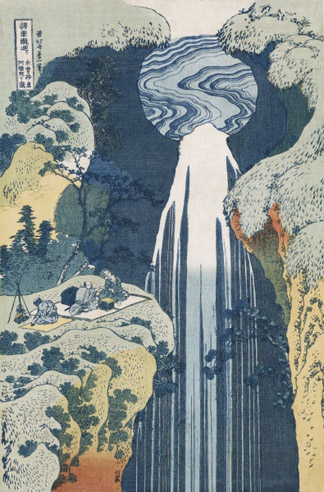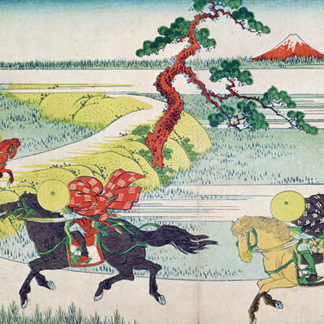Published 08/10/2010

Born in 1760, Katsushika Hokusai was raised during the Edo Period, a time in Japan known for stability and peace. Japan was developing not only economically, but also artistically. Along with music, poetry and literature being made readily available to the public, traditional woodblock prints known as Ukiyo-e or "pictures of the floating world" were popular due to their elegant portrayal of Japanese history and ornate landscapes. After working as an apprentice wood carver for four years, at eighteen Hokusai entered the studio of Katsukawa Shunsho, a leading figure in the Ukiyo-e style. During his apprenticeship, Hokusai published his first set of prints on Kabuki, actors and characters popularized in Japanese theater. It is estimated that throughout the decade he worked in Shunsho's studio, Hokusai produced up to 30,000 prints and illustrations, most of which drew inspiration from the traditions, legends, and lives of the Japanese people. After Shunsho's death, Hokusai began exploring other styles of print. By 1800, he was incorporating imported and alternative Japanese printing techniques to help further develop his own Ukiyo-e style. He became increasingly popular over the next decade in part because of his ability to promote himself, including collaborating with novelists on illustrated book projects. The influence of important French and Dutch scenic landscapes would eventually lead to what is now considered his most influential work, 'Thirty-six Views of Mount Fuji'. |
|
| Hokusai started the 'Thirty-six Views of Mount Fuji' series when he was 70 years old and at the peak of his artistic vigor. The series consists of thirty-six separate color woodblock prints each depicting Mount Fuji in different seasons. Of the prints, the most famous is that of 'The Great Wave of Kanagawa', a composition so iconic, it remains one the most mass-produced images in the Western art world. Hokusai would go on to paint well into his 80's, with most of his significant works completed after the age of 60. Although the Ukiyo-e print movement had faded considerably prior to Hokusai's death in 1849, the distribution of Japanese art was flourishing in Europe. Hokusai would have a major impact on not only Impressionism, but also Art Nouveau, Cubism and Post-Impressionism. Artists such as Van Gogh, Monet and Toulouse-Lautrec carried the striking imagery and dramatic color of Hokusai and Japanese prints well into the 20th century. |




